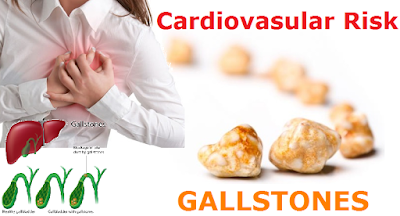Gallstones grow inside the gallbladder or biliary tract. These stones can be asymptomatic or symptomatic; only gallstones with symptoms or complications are defined as gallstone disease. Based on their composition, gallstones are classified into cholesterol gallstones, which represent the predominant entity, and bilirubin (‘pigment’) stones. Black pigment stones can be caused by chronic hemolysis; brown pigment stones typically develop in obstructed and infected bile ducts. For treatment, localization of the gallstones in the biliary tract is more relevant than composition. Overall, up to 20% of adults develop gallstones and >20% of those develop symptoms or complications. Risk factors for gallstones are female sex, age, pregnancy, physical inactivity, obesity and over nutrition. Factors involved in metabolic syndrome increase the risk of developing gallstones and form the basis of primary prevention by lifestyle changes. Common mutations in the hepatic cholesterol transporter ABCG8 confer most of the genetic risk of developing gallstones, which accounts for ∼25% of the total risk. Diagnosis is mainly based on clinical symptoms, abdominal ultrasonography and liver biochemistry tests. Symptoms often precede the onset of the three common and potentially life-threatening complications of gallstones (acute cholecystitis, acute cholangitis and biliary pancreatitis). Although our knowledge on the genetics and pathophysiology of gallstones has expanded recently, current treatment algorithms remain predominantly invasive and are based on surgery. Hence, our future efforts should focus on novel preventive strategies to overcome the onset of gallstones in at-risk patients in particular, but also in the population in general.
Introduction
Gallstones (cholelithiasis) are masses in the gallbladder or biliary tract that are caused by abnormally high levels of either cholesterol or bilirubin (a breakdown product of heme) in bile (Fig. 1). Gallstones are common (∼10–20% of the global adult population), and >20% of people with gallstones will develop symptoms in their lifetime (including biliary colic or infections), usually in adulthood. Gallstone disease is defined by the occurrence of symptoms or complications caused by gallstones in the gallbladder and/or the bile ducts. From a clinical perspective and in treatment algorithms, those with asymptomatic stones are not generally classified as having gallstone disease. Gallstone disease is among the gastrointestinal conditions associated with the highest socioeconomic costs.
 |
| Figure 1: Classification of gallstones. |
PrimeView Poster:
Gallstones are masses in the gallbladder or biliary tract. 10–20% of adults will develop gallstones in their lifetime, and >20% of those will develop symptoms or complications. This Primer by Lammert et al. focuses on the formation of gallstones, summarizes the current principles of treatment of the stones and their potential complications and envisions future approaches for this widespread disease. And this PrimeView focuses on the most common risk factors, which include genetics, ethnicity, sex, age, drugs, parasites, over nutrition and pregnancy.
Frank Lammert, Kurinchi Gurusamy, Cynthia W. Ko,Juan-Francisco Miquel, Nahum Méndez-Sánchez, Piero Portincasa, Karel J. van Erpecum, Cees J. van Laarhoven& David Q.-H. Wang
Source: NatureReviewsDiseasePrimers




